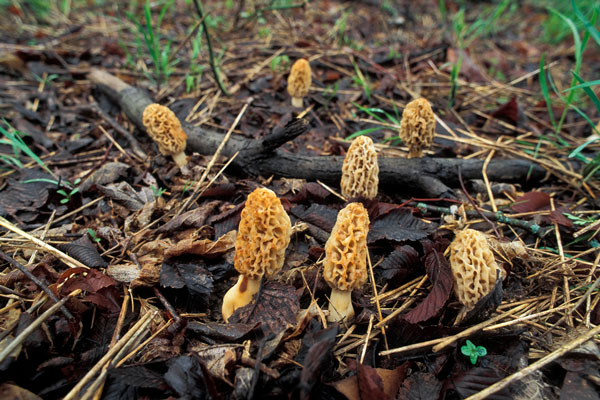
By Dan Zarlenga, Missouri Department of Conservation
Photo Caption: The morel mushroom is a fantastic fungus, but there’s more than meets the eye. Photo courtesy of the Missouri Department of Conservation
There’s a saying that beauty is more than skin deep. It turns out the mysteries of nature can be more than surface deep too. That’s most definitely true of what to a mushroom lover is an icon of April, the morel!
Morel mushrooms are truly one of the great treats of spring. The challenge of finding them makes morels even more special. Most mushroom seekers will never reveal their special hunting jackpots.
The distinctive-looking and delicious-to-eat yellow morel, a species commonly sought after, is noted for its honeycombed cap and yellow to yellow-gray to yellow-brown ridges and pits; it is also completely hollow. This last characteristic is particularly important to distinguish it from the poisonous false morels, which are to be avoided. The cap of the yellow morel is deeply pitted and hollow also, and the bottom of the cap is fused to the stalk.
It’s a seemingly magic combination of time of year, weather, rain, and soil temperature that encourages morels to emerge. That perfect convergence typically occurs sometime during the month of April but can begin, depending on conditions, anytime from late March to early May. Once up, the “morel season” might last for as much as a month … again, depending on conditions.
Ask a dozen morel hunters where the best places to find these tasty mushrooms exist, and you might get a dozen answers. However, many masters of morel hunting seem to agree that these mushrooms can often be found in wetter areas like moist woodlands and in river bottoms. Morel-hunting wisdom also extols looking under ash trees, cottonwoods, dying elms, and even apple trees. Many say they may be spotted elsewhere as well, under both hardwood and conifer trees.
Morel mushrooms are joined in a codependent relationship with trees. Morels, like all mushrooms, are forms of fungi. But those captivating caps are only the proverbial tip of the fungal icebergs. Most of the organism that the mushroom represents lives beneath the surface of the soil, as a vast network of underground cells, called a mycelium. Here, the mycelium forms a symbiotic relationship with the roots of living trees, helping their woody partners obtain nutrients.
When conditions are right, the mycelium develops mushrooms. The mushrooms we see are merely the fruiting bodies of that larger subsurface organism, just an appendage of the whole body. The mushrooms produce spores that can eventually become new mycelia.
When it comes to mushroom hunting, it is imperative that mushroomers positively identify all mushrooms before attempting to eat them. A good mushroom guide is essential for this. Never consume any mushroom you are not 100% sure of! Wild mushrooms should always be cooked and
never eaten raw. Clean them first by slicing lengthwise and soaking them in salted water. This should rid them of any insects.
Next time you’re lucky enough to discover one of these marvelous morels, don’t hesitate to rejoice in your good fortune. But do take a minute to appreciate that those tempting morsels are but a mere sample of a complex living thing that thrives beneath your feet. A beauty more than soil deep, and a most fantastic fungus indeed!


